Introduction to Vehicle Electronics Architecture
In the automotive sector, the progress of technology has led to the evolution of advanced electronic systems that are central to the safety, comfort, and operation of modern automobiles. The development of a structured framework known as Vehicle Electronic Architecture has been necessitated by this. This critical concept, its significance in the automotive domain and its emergence over time is explained in this section.
Definition and Importance
Definition: The structured configuration of electronic components, modules, and networks within a vehicle defines Vehicle Electronics Architecture. Acting as a blueprint, it facilitates the integration of diverse electronic systems like engine control units, infotainment, safety systems, and beyond.
Importance:
Integration: As electronic components increase within vehicles, a clearly presented architecture becomes imperative, fostering seamless integration and interaction among diverse systems.
Reliability and Safety: Enhanced by a strong architectural design, electronic systems bolster reliability, guaranteeing constant availability of safety-critical functions.
Scalability: The adaptability of contemporary vehicle electronics architecture is crucial to embrace forthcoming innovations and technological advancements, ultimately securing the vehicle's durability over time.
Efficiency: Efficient use of resources, energy consumption, reduced weight, and costs are enabled by an optimal architecture.
Evolution of Vehicle Electronics Architecture
By monitoring the key phases and technological advancements, the evolution of Vehicle Electronics Architecture can be understood:
Pre-Microprocessor Era (Before the 1970s): With minimal electronic elements, vehicles were mainly mechanical during this period. The architectural design centered on simplicity, incorporating fundamental wiring for tasks like lighting, ignition, and other essential functions.
Advent of Microprocessors (1970s - 1980s): The advent of microprocessors marked the onset of a new epoch, facilitating the creation of Electronic Control Units (ECUs) used in engine management and other critical control functions. The onset of a more intricate vehicle electronics framework commenced during this era.
Expansion of Electronics (1990s): Having airbags, infotainment, GPS navigation, and ABS, this phase saw a quick expansion of electronic systems. Increasing intricacy in architecture necessitated heightened integration and enhanced network communication.
Centralized vs. Distributed Architectures (2000s): With the different pros and cons of centralized and distributed architectures, a shift towards these architectures emerged with the rise in complexity, leading to more scalable and modular approach.
Current Trends (2010s - Present): Advancements in recent times have facilitated the development of domain-specific and zonal architectures, thereby enhancing the efficiency, flexibility, and interconnectivity of systems. Incorporating a multitude of communication protocols like CAN, LIN, FlexRay, and Ethernet, has significantly enhanced the richness of the architecture.
The modern design of automobiles heavily relies on Vehicle Electronics Architecture, crucial for orchestrating seamless coordination among diverse electronic components and systems. The progression of it shows the technological advancements and increasing intricacies found in contemporary vehicle systems. Comprehending the definition, importance, and evolution of this architectural style stands as a cornerstone for automotive professionals like engineers, designers, and manufacturers, to craft vehicles that prioritize safety, efficiency, and adherence to contemporary technological advancements.
Centralized vs. Distributed Architectures
One of the imperative considerations in vehicle designs is the choice between centralized and distributed architectures in the evolving landscape of automotive technology. The implications of both strategies significantly impact communication among electronic components and systems within a vehicle. In this segment, a thorough analysis of these two architectures is presented, wherein their features are compared, and their individual pros and cons are explored in detail.
Overview and Comparison
Centralized Architecture:
Key functions and computations are consolidated into a single or few central control units in a centralized architecture. For processing information and sending commands to peripheral devices, these units are responsible.
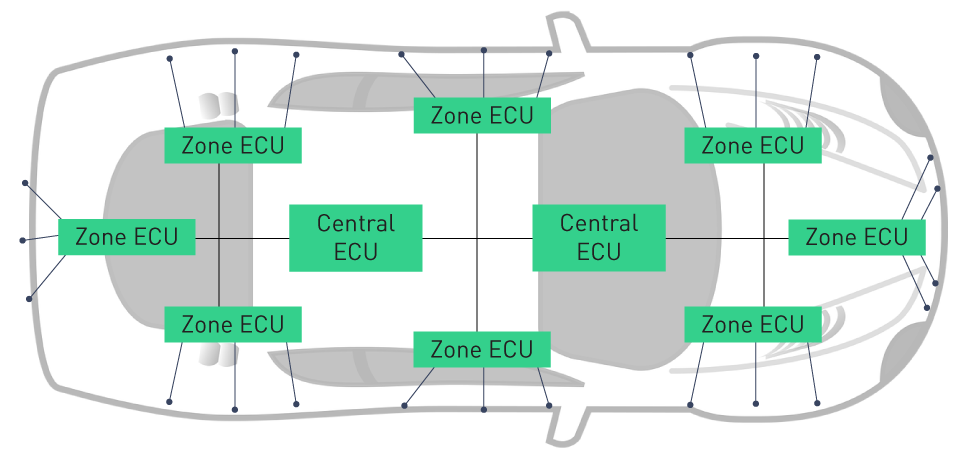
Figure 7: Centralized Architecture
Distributed Architecture
Contrasting with centralized systems, a distributed architecture delegates functions across numerous Electronic Control Units (ECUs) positioned throughout the vehicle, with each ECU tailored to handle particular tasks or task sets.
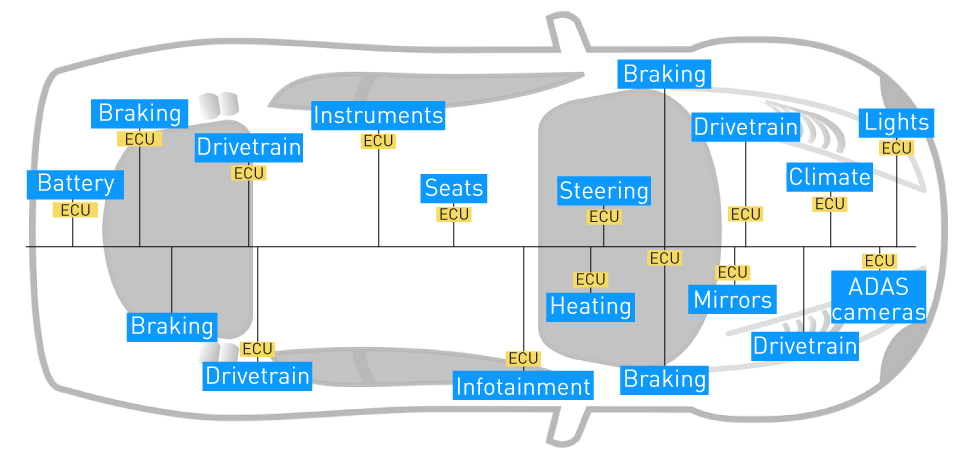
Figure 8: Distributed Architecture
Advantages and Disadvantages
Advantages of Centralized Architecture:
Cost-Effective: Fewer ECUs generally lowers initial costs.
Ease of Maintenance: Centralized management can simplify maintenance.
Unified Control: Cohesive system behavior can be caused by central control.
Disadvantages of Centralized Architecture:
Single Point of Failure: Failure of central unit can disrupt the entire system.
Limited Scalability: It is complicated and costly to add new functions.
Advantages of Distributed Architecture:
Flexibility and Scalability: It is easier to add new functions, expand, or modify.
Enhanced Reliability: Redundancy can be built into the system.
Parallel Processing: Concurrent operations are allowed by parallel processing, elevating performance.
Disadvantages of Distributed Architecture:
Higher Costs: Higher production and maintenance costs are caused by more ECUs.
Complexity: It is intricate and challenging to manage a distribution system.
Choosing between centralized and distributed architectures for vehicle electronics involves a comprehensive assessment encompassing cost, scalability, complexity, and reliability, demanding careful consideration across multiple dimensions. While providing simplicity and potential cost reductions, centralized architecture might encounter drawbacks such as restricted flexibility and susceptibility to failures. Conversely, distributed architecture prioritizes modularity and resilience, but at the cost of increased complexity and greater expenses. For automotive engineers and designers, grasping these intricacies proves vital in choosing the ideal architecture for a specific vehicle, effectively managing trade-offs to attain peak performance and reliability.
Domain Architecture
In contemporary vehicle electronics, domain architecture embodies a strategic design method, centralizing functionalities into specific domains. In contrast to the fragmented design seen in a distributed architecture, domain architecture consolidates related functions and services, creating a more unified and efficient structure. This architecture becomes increasingly critical as the challenges of electronic functions continue to expand in automotive systems.
Description and Use Cases
In the context of vehicle electronics, domain architecture refers to the partitioning of functions into different domains. The primary functional areas of a vehicle, such as powertrain, driver assistance, chassis, infotainment, and body control, often correspond with these domains. The architecture allows more efficient development, maintenance, and integration by consolidating related functions within a particular domain.

Figure 9: Domain architecture
Use Cases:
Electric and Hybrid Vehicles: Handles different propulsion controls, energy sources, and energy storage systems.
Advanced Driver Assistance Systems (ADAS): lane-keeping assist, adaptive cruise control, and other driver aids are integrated.
Infotainment Systems: Audio, video, connectivity, navigation, and user interfaces are integrated by infotainment systems.
Body Control: Comfort features, climate control, lighting, and door locks are handled by body control.
Components of Domain Architecture
Domain Control Units (DCUs): Central to each domain is a Domain Control Unit (DCU), responsible for orchestrating functions and managing communication between the distinct Electronic Control Units (ECUs) within the domain as well as with other domains.
Gateways: By serving as controlled interfaces between domains, gateways enable inter-domain communication while preserving security, isolation, and integrity.
ECUs: Specialized Electronic Control Units (ECUs) within each domain oversee specific functions, ranging from powertrain engine control to multimedia processing within the infotainment domain.
Sensors and Actuators: Within a domain, numerous sensors and actuators gather data and execute commands, communicating directly with the physical parameters of the automobiles.
Communication Networks: Information exchange within a domain and between domains via gateways is enabled by communication networks like LIN, CAN, or Ethernet.
For handling the rising complexity of advanced vehicles, domain architecture in vehicle electronics offers a strong framework. It enables for more streamlined development and provides potential efficiencies in both software and hardware by grouping related operations into clear and defined domains. The structure of each domain relies on essential components like gateways, DCUs, and specialized ECUs, operating collaboratively to ensure unified functionality throughout the vehicle.
Within the swiftly changing automotive landscape, where efficiency, integration, and adaptability reign, domain architecture emerges as a robust strategy, catering to diverse use cases spanning from advanced infotainment systems to electric propulsion. Mastering this architecture empowers engineers with the expertise necessary to create and deploy state-of-the-art automotive systems capable of accommodating future advancements and technologies.
Zonal Electrical/Electronic (E/E) Architecture
The traditional E/E architectures have emerged to accommodate new demands in performance, scalability, and functionality as the automotive industry advances towards more autonomous and electric vehicles. Addressing these requirements via a radical rethinking of vehicle system design, zonal E/E architecture as a type of centralized architecture evolved as a solution. An overview of zonal architecture, its implementation and advantages are explained in this section.
Overview and Implementation
In automotive design, the Zonal E/E architecture signifies a revolutionary transformation by transitioning from individual control units for every function to the strategic organization of functions within designated zones. Correlating with specific physical regions of the vehicle, every zone aligns with areas like the front, rear, or cabin. The management of various functions within these zones is handled by a Zonal Control Unit (ZCU), streamlining operations and enhancing efficacy through reduced complexity.

Figure 10: Zonal architecture
Implementation:
Zonal Control Units (ZCUs): Responsible for numerous functions within a defined zone, these are the center of zonal architecture.
Network Topology: For intra-zone management and inter-zone communication, the architecture uses a combination of networks like LIN, CAN, FlexRay, and Ethernet.
Integration of Functions: Offering centralized processing within each zone, functions that were earlier managed by individual ECUs are consolidated into zones.
Benefits of Zonal E/E Architecture
Reduced Complexity: Centralization of functions within specific zones minimizes the necessity for individual ECUs and wiring harnesses, resulting in a streamlined and easily controllable system architecture.
Scalability: Facilitating simpler scalability, the zonal architecture enables the inclusion of extra functions or alterations within a zone without necessitating completely new hardware components.
Weight and Cost Reduction: By consolidating functionalities, there is a decrease in physical hardware, resulting in reduced weight and cost implications. The advantages are especially pronounced in electric vehicles, as reductions in weight significantly influence both range and efficiency.
Enhanced Flexibility: The modular design of the architecture enables swift adaptation to emerge technologies and evolving demands, fostering faster innovation and responsiveness to shifts in market trends.
Improved Performance: Through a decreased count of ECUs and streamlined communication pathways, zonal architecture has the potential to elevate system performance, especially in data-intensive scenarios such as autonomous driving.
In the automotive electronics field, Zonal Electrical/Electronic (E/E) Architecture has a crucial advancement. Through a reorganization of function management within the vehicle, it tackles contemporary complexities related to scalability, flexibility, weight, cost, and performance challenges in a modern context. Careful consideration of parameters like network topology, security measures, ZCUs, and software platforms are needed for implementation of zonal architecture. However, its advantageous features present a compelling option for the upcoming vehicle generation, aligning well with the industry's drive for smarter, more efficient, and adaptable systems. Acquiring knowledge about this architecture equips engineers and designers with the necessary insights to leverage its potential, thereby contributing to the continuous evolution of automotive technology.


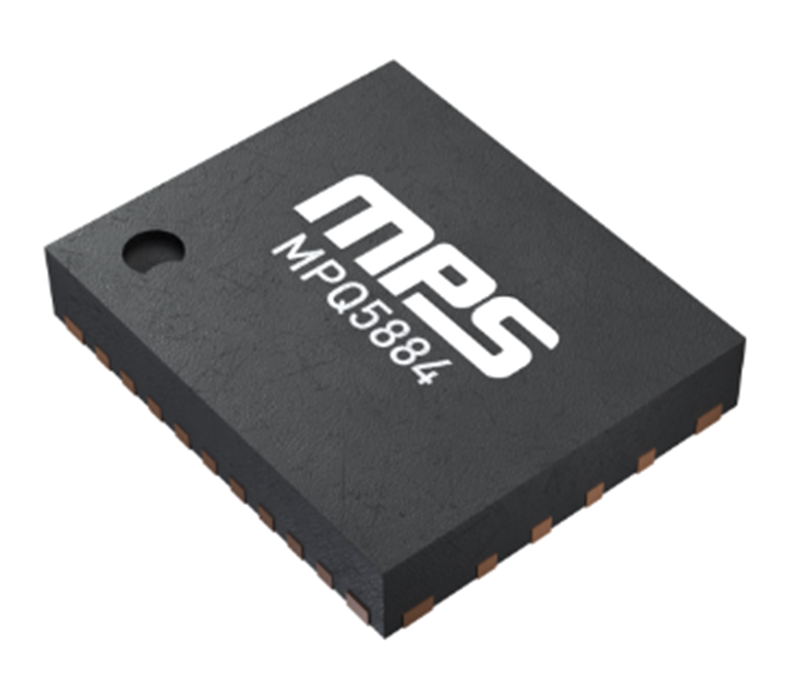

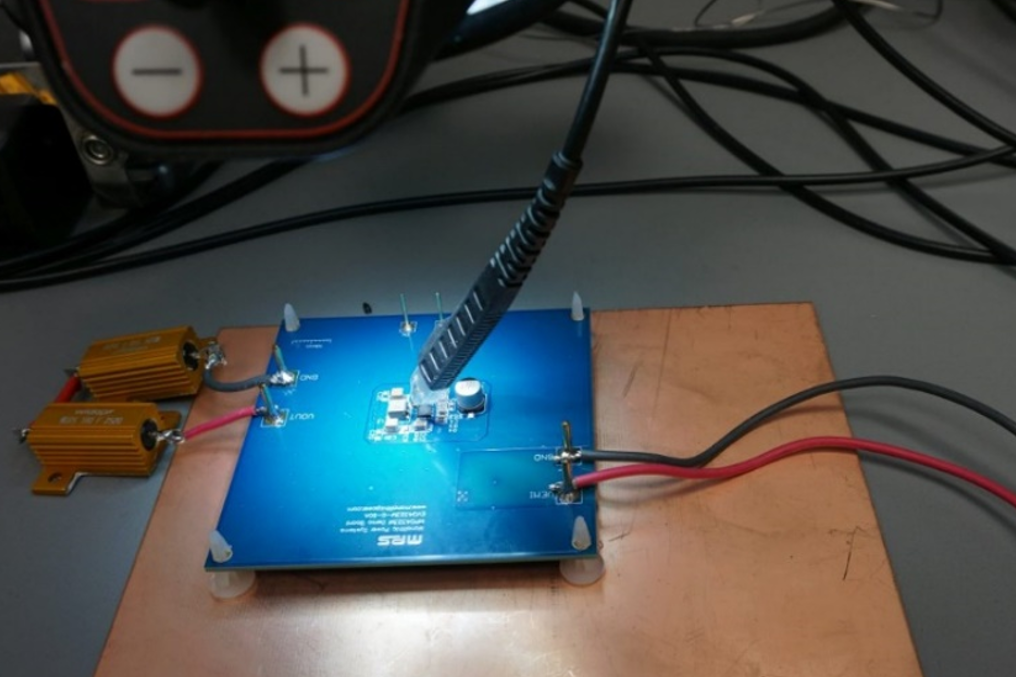
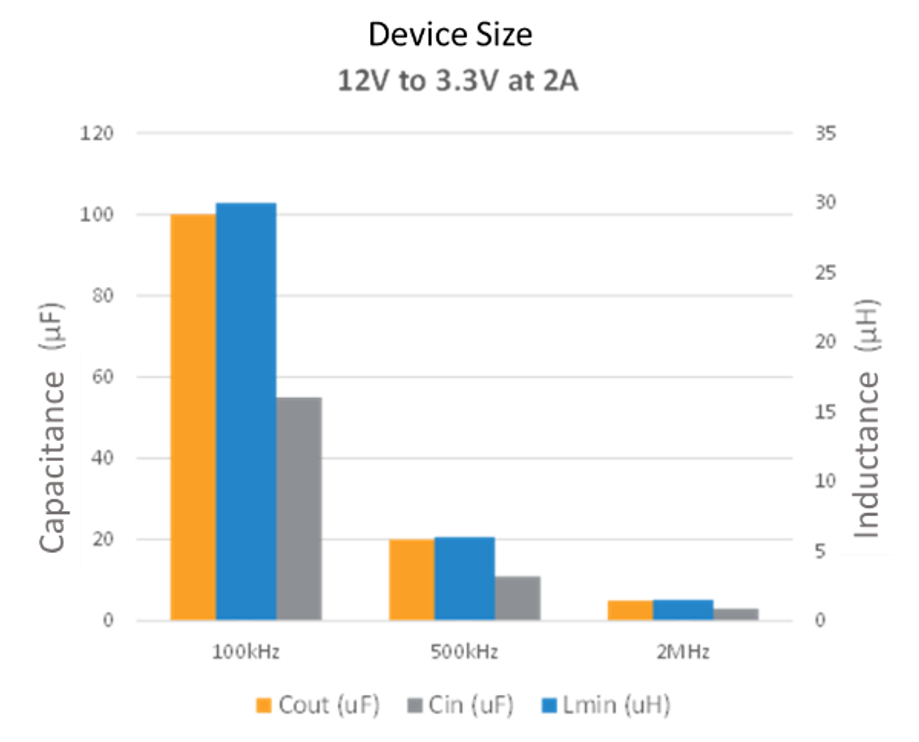

直接登录
创建新帐号